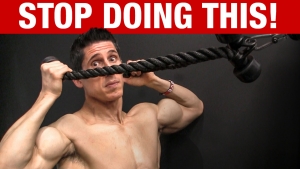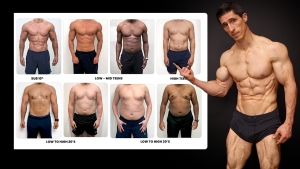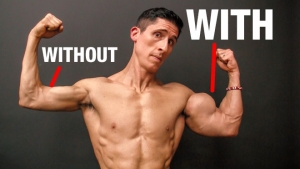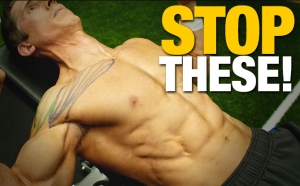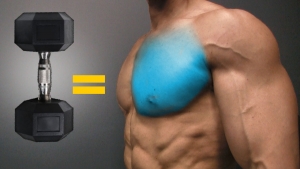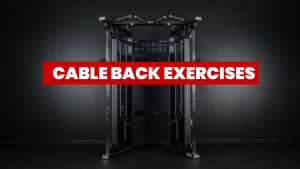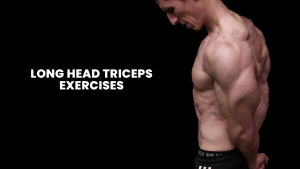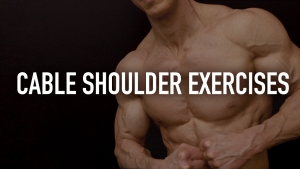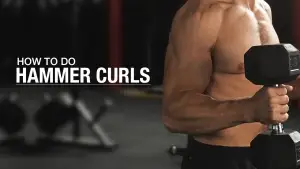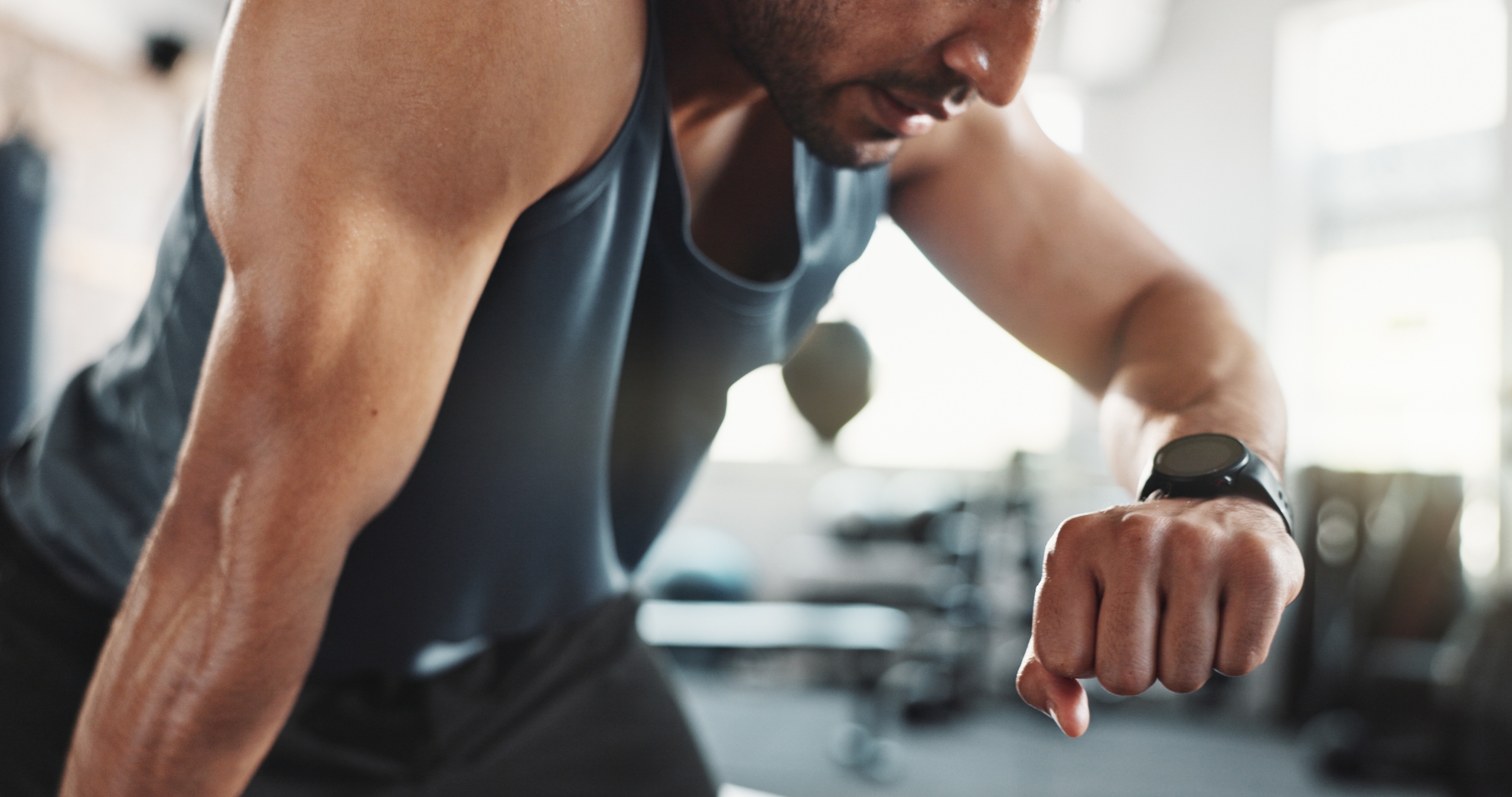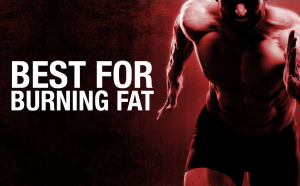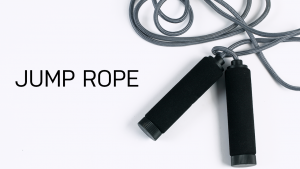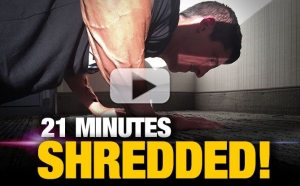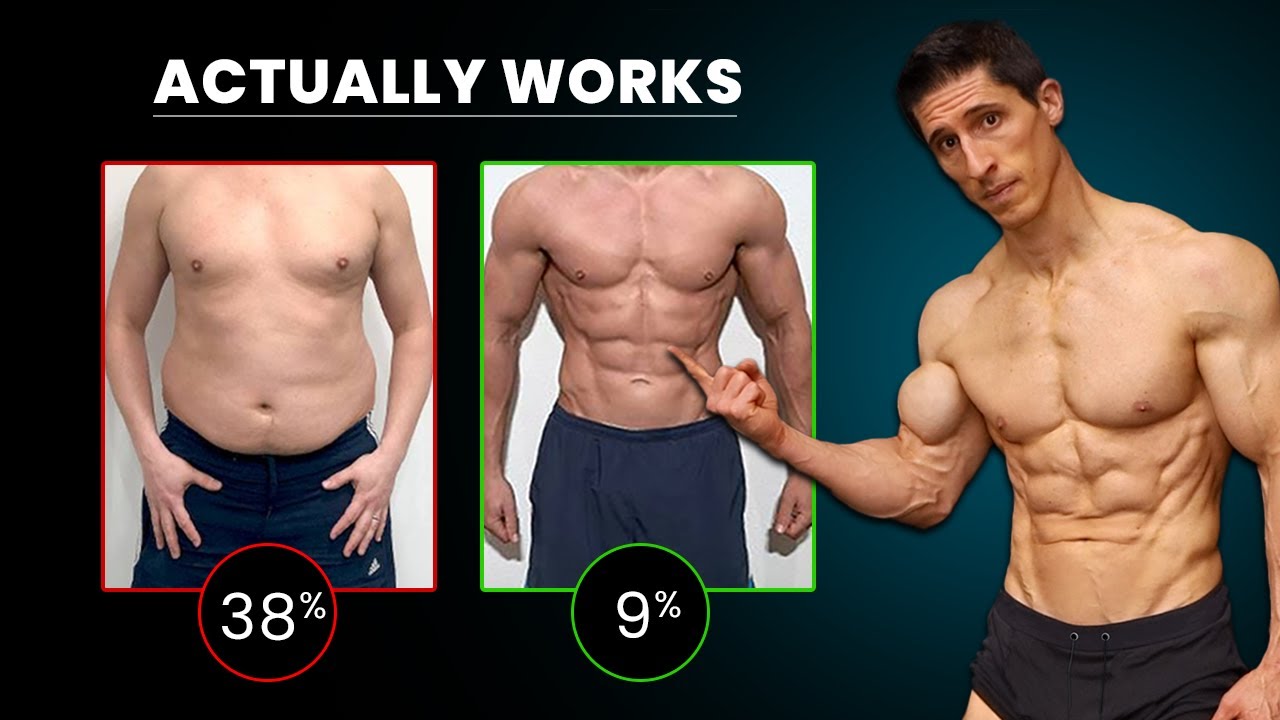
IS AEROBIC OR ANAEROBIC BETTER?
People jumping between aerobic workouts and anaerobic workouts without understanding how each type of exercise can help or hurt their fitness goals.
For example, a lot of guys want to get stronger, but they stack high-intensity conditioning exercise on top of heavy resistance training in the same session. These same guys wonder why they aren’t seeing real progress.
To put it simply: You need to use the right type of exercise along with the appropriate acute variables that match your fitness goals.
Aerobic and anaerobic exercise are both great but one might hold more importance for you based on what it is you want to achieve.
Your body responds to different types of exercise in very specific ways. And if you don’t know which one fits your goal? You’re just guessing.
That can lead to frustration, plateaus, and missed gains in muscle mass, cardiovascular conditioning, and overall physical health.
Today, I’m going to break down what you need to know about aerobic vs. anaerobic exercise without the fluff.
You’ll learn how to train with purpose, based on science, not guesswork.
And you’ll finally get clear on what’s holding back your results, no matter if your goal is to build strength, burn fat, or max out your muscle mass.
WHAT IS AEROBIC EXERCISE?
Most people think aerobic exercise means hopping on a treadmill and zoning out for 45 minutes. That’s not training. That’s a waste of time.
Aerobic capacity exercise is any type of activity that keeps your body moving for an extended period of time, at a pace where your breathing rate and heart rate go up but not so high that you can’t sustain it.
A good illustration of this would be a jog compared to a sprint. You’re going to be able to sustain a jog for a lot longer than a sprint.
During aerobic energy pathways, your body uses oxygen to convert carbs and fat into energy.
This fuels your movement with a steady supply of adenosine triphosphate (ATP), the energy your muscles use to contract.
It trains the aerobic pathway, which boosts your aerobic fitness, improves cardiovascular fitness, and helps you recover faster between sets and sessions.
This isn’t the same system your body uses during anaerobic workouts, where oxygen can’t keep up and your body relies on stored fuel like muscle glycogen to produce energy fast. That’s a different beast entirely (and we’ll get to it).
Aerobic exercises focus on smart, purposeful movement. Here are examples of effective aerobic training:
- Incline walking or hiking (preferably outside)
- Tempo bodyweight circuits (squats, pushups, crawling, done continuously at a moderate pace)
- Rucking (walking with a weighted backpack)
- Steady-state cycling or rowing
- Jump rope at a conversational pace
- Hill marches or sled pushes
With aerobic training, you’re building your engine. You’re improving how efficiently your heart and lungs move oxygen through the bloodstream and into working muscles without dipping into that oxygen deficit zone that crushes performance.
WHEN SHOULD YOU USE AEROBIC TRAINING?
If you care about your long-term physical health, want to recover faster between intense workouts, and don’t feel like gassing out after a few jump squats, aerobic training is essential.
At the basic level, aerobic training improves the aerobic respiration process or how your body uses the presence of oxygen to turn fuel into energy during a sustained period of movement.
This fuels muscular activity without relying on the anaerobic lactic pathway or spiking blood lactate concentration, which means you last longer before hitting cessation of exercise from fatigue.
When your aerobic system is weak, your intense activity suffers. You fatigue faster, blood flow becomes inefficient, and your recovery tanks.
Here are some fitness goals that can improve by focusing on aerobic exercise:
CARDIOVASCULAR HEALTH
Aerobic training improves how efficiently your heart pumps blood during physical activity and at rest.
It increases aerobic power and your body’s ability to deliver oxygen-rich blood to working muscles through cellular respiration.
That means less strain on your heart and lungs during vigorous activity, lower blood pressure, and a stronger cardiovascular system overall.
It also raises your maximal oxygen uptake (VO2 max), which is a direct marker of how fit you are. This isn’t about how much you sweat during a workout, but how well your body can handle it internally.
You want your heart and lungs to be as strong as your biceps? This is how you get there.
ENDURANCE AND AEROBIC FITNESS
If you can’t make it through a full set of resistance training without feeling winded, your problem isn’t strength, it’s conditioning.
Aerobic training builds the aerobic pathway, which fuels your muscles with oxygen over longer exercise bouts.
That matters whether you’re grinding through squats, running sprints, or just trying to keep up with your workout partner.
When your aerobic fitness levels are dialed in, you’ll recover faster between sets, push harder during endurance-type exercises, and last longer in the gym without crashing from oxygen debt or buildup of lactic acid.
FAT LOSS
Fat doesn’t burn without oxygen. Aerobic training puts your body in the ideal zone to use fat for fuel through the aerobic respiration process instead of draining your muscle glycogen like most anaerobic workouts do.
That’s important if you want to lose adipose tissue without losing muscle.
It also builds habits. Low- to moderate-intensity aerobic sessions (like brisk walking, rucking, or zone 2 cardio) are easier to stick to consistently, which keeps your overall energy output high without frying your nervous system or compromising recovery.
RECOVERY BETWEEN WORKOUTS
If you’re dragging through every workout, sore all the time, or need 10 minutes between sets just to breathe, your recovery system is shot.
Aerobic exercise improves blood flow, helps clear blood lactate concentration, and boosts your body’s ability to recover between intense workouts.
Think of it as active restoration.
A strong aerobic system keeps muscle contraction more efficient, removes fatigue byproducts faster, and shortens time to exhaustion in future sessions. The stronger your engine, the faster you refuel.
LONG-TERM HEALTH AND REDUCE MORTALITY RISK
This one isn’t about abs. It’s about your physical well-being and staying alive.
Aerobic training reduces your risk of mortality by improving all the key markers of physical health: lower blood pressure, better glucose regulation, improved maximum oxygen consumption, and enhanced heart function.
According to the concepts of exercise physiology, VO2 max is one of the strongest predictors of lifespan in exercise in human studies.
In plain English? If you want to live longer and live better, aerobic activities need to be a part of your weekly plan.
BEST TYPE OF AEROBIC EXERCISE
When you hear “aerobic exercise,” you might picture long, slow cardio sessions that feel more like punishment than progress.
If you want to benefit from aerobic training, you need to stop guessing and start training by zones.
This isn’t about jogging mindlessly. It’s about working smart, using your heart rate to tap into specific energy pathways, and matching your training effort to your fitness goal.
THE SCIENCE BEHIND THE ZONES
Every aerobic workout routine should be based on one number: your maximum heart rate (MHR).
That’s 220 minus your age. Simple.
From there, we break down aerobic training into zones, each one tied to a different intensity level, metabolic pathways response, and training health benefits.
You’re not just burning calories. You’re building capacity across different physiological pathways to support human muscle metabolism, recovery, and performance.
ZONE 2: (60–70% OF MAX HEART RATE)
This is the foundation of aerobic fitness. You’re training the aerobic pathway at a low intensity where your body is using oxygen efficiently to produce additional energy.
The goal here is aerobic speed, aerobic power, and improved maximum oxygen consumption without tapping into the anaerobic threshold process or generating a huge oxygen deficit.
During zone 2 aerobic exercise, you can still talk but you’re slightly out of breath. It’s low intensity, but high impact on your long-term fitness.
Examples of Zone 2 aerobic exercises:
- Incline walking
- Rucking
- Light cycling or rowing
- Sled marches at a steady pace
- Swimming or tempo-based circuits
Time required: Start with just 15 minutes. Progress to 30 minutes over time.
ZONE 5: (90–95% OF MAX HEART RATE)
This is where you’re working close to your peak speed, pushing higher-intensity work, and training at the edge of your performance capacity.
This zone builds anaerobic power and raises the ceiling on what your body can handle.
You’ll be using anaerobic respiration, tapping into the glycolytic pathway, and generating serious power outputs.
And no, this isn’t just for elite long-distance runners or sprint and middle-distance runners. This helps anyone who wants to move better, recover faster, and perform at a higher level.
Workout structure for Zone 5 training:
- 1:2 Ratio: 20 seconds all-out, 40 seconds of rest
- 1:1 Ratio: 2.5 minutes high effort, 2.5 minutes recovery
Time required: Select either ratio then start with just five minutes. Build to 20 minutes over time.
ZONE 3.5: (~75% OF MAX HEART RATE)
This is where strength meets stamina.
We’re using traditional anaerobic exercises such as pushups, squats, lunges but sequencing them with minimal rest to create a sustained aerobic effect.
You’re still moving, still breathing hard, but now you’re hitting multiple muscle groups and driving oxygen demand across the board.
This isn’t just about cardio; it’s about conditioning for real-life performance.
Workout format:
- 5 exercises x 45 seconds each, 15 seconds of rest
- Repeat the circuit twice (10 minutes total to start)
Example movements:
- Ratchet Squats
- Pushups to Knee Pushups
- Bridge and Reach
- Superman Press Out
- Split Squat Hop to Reverse Lunges
HOW TO PROGRAM IT
Rotate the following schedule, if needed, but keep the sequence.
You’re training your body to respond to different types of effort, not just burning fuel. That’s how you build muscle metabolic efficiency.
Zone Training Schedule:
- Monday – Zone 2
- Tuesday – Zone 5
- Wednesday – Zone 2
- Thursday – Zone 2
- Friday – Zone 2
- Saturday – Zone 3.5
- Sunday – Zone 5
COMMON AEROBIC TRAINING MISTAKES
You’re doing aerobic training to improve your conditioning, burn fat, or recover faster but if you’re making these mistakes, you’re holding yourself back.
Here are the most common aerobic training mistakes that crush progress, burn you out, or just flat-out miss the point.
GOING TOO HARD, TOO SOON
You don’t need to go all out every session to make progress.
In fact, if your heart rate is constantly spiking, you’re likely pushing past your aerobic activity requirements and missing the entire point of aerobic conditioning.
This isn’t about exhaustive exercise. It’s about controlled effort over a pre-determined duration.
Going too hard too soon not only limits your aerobic gains, but it also increases your risk of overexertion and tanks your recovery.
Start with manageable sessions (15–20 minutes), stick to your target heart rate zone, and build up gradually based on your level of fitness.
NOT TRAINING IN ZONES
Random cardio equals random results. Without a clear field for training prescription, your body doesn’t adapt the way you want it to.
Training by feel isn’t enough. You need a plan based on your maximum heart rate and critical speed.
Know your heart rate zones and match your effort to the goal.
Zone 2 builds the base. Zone 5 pushes the limits. Zone 3.5 blends function with fitness.
This is how you train the right metabolic energy pathway.
TREATING AEROBIC WORK AS A TIME-FILLER
Walking on a treadmill for 30 minutes while scrolling on your phone isn’t aerobic training. It’s passing time.
To make real improvements in aerobic speed, aerobic power, and cardiovascular efficiency, you need intent behind every exercise effort.
Track your effort, keep your heart rate in the target zone, and treat your aerobic sessions like you treat your lifting: purposeful, focused, and progressive.
DOING THE SAME WORKOUT EVERY TIME
Your body is built to adapt. If you always do the same muscular exercise, the same machine, and the same pace, you’ll plateau fast.
You’ll also fail to challenge all aspects of skeletal muscle endurance and aerobic metabolism.
Rotate your activity of choice: hiking, sled drags, rowing, cycling, bodyweight exercises, etc.
Vary duration, intensity, and movement patterns to challenge your system in new ways.
NOT BUILDING THE HABIT
The biggest mistake? Inconsistency. Aerobic training works but only if you do it.
If you’re skipping sessions or treating conditioning like a punishment, you’ll never make it part of your routine.
Anchor it to something. First 15 minutes of your day? Post-workout cooldown? Weekend hike?
It doesn’t matter when. Just make it automatic.
If you want better provision of exercise energy and long-term performance, you’ve got to form habits that stick.
WHAT IS ANAEROBIC EXERCISE?
Anaerobic exercise is all about intensity. We’re talking short bursts of all-out effort, powered by raw strength and speed. That’s what sets it apart.
Unlike aerobic training, anaerobic activity happens in the absence of oxygen. In other words, it’s intense activity without oxygen as the main source of energy for the muscles.
Your body can’t rely on oxygen-based sources of energy to keep you going, so it taps into immediate fuel sources, ATP and muscle glycogen, through the anaerobic lactic pathway and glycolytic pathway.
This is the zone of maximal-intensity exercise, where every rep, sprint, or explosive movement pushes the limit of what your body can handle in a short pre-determined effort duration, usually less than two minutes per effort.
Anaerobic exercise builds anaerobic power, targets fast-twitch muscle fibers, and maximizes force production through intense muscle contraction.
This is how you build real strength and size, by pushing your skeletal muscle to its limits through overload.
Here are examples of anaerobic training
- Heavy resistance lifting
- Jump squats
- Sled pushes
- High-intensity interval training (HIIT)
Whether you’re hammering low-rep deadlifts, sprinting like your life depends on it, or driving a sled until your legs give out, these movements demand maximum exercise effort.
They activate the constants of muscle and shock your system to grow stronger, faster, and more powerful.
WHEN SHOULD YOU USE ANAEROBIC TRAINING?
If you want real results that show up in the mirror and in the way you move, anaerobic exercise needs to be a part of your workout program.
This isn’t about killing time in the gym or going through the motions. This is about intensity, muscle overload, and training that builds strength, size, speed, and power.
Here’s when you use it and why it works.
BUILD STRENGTH
You’re not going to build real strength by coasting through light weights and high reps.
Strength isn’t about surviving the workout, it’s about challenging your body to move as much weight as possible, as efficiently as possible, for short periods of time. That’s where anaerobic training comes in.
When you lift heavy (think 3 to 5 reps per set) you’re tapping into the ATP-PC system, your body’s fastest metabolic energy systems.
This system uses stored adenosine triphosphate (ATP) and creatine phosphate to fuel maximal exercise force production in a matter of seconds.
These short, high-intensity bouts demand everything from your skeletal muscle. Each rep recruits fast-twitch muscle fibers, the ones responsible for strength, power, and growth.
The more consistently you challenge those fibers with progressive overload, the stronger you get.
And don’t forget the neurological side. Strength isn’t just a muscular game. It’s a nervous system one, too.
Anaerobic strength work teaches your brain and body to fire more efficiently, stabilize better, and control load under pressure.
INCREASE MUSCLE MASS
If you want to grow, you’ve got to overload your skeletal muscle with short, intense exercise bouts of effort that push your muscles past what they’re comfortable doing. That’s where real growth starts.
Anaerobic workouts target your fast-twitch muscle fibers, the big, explosive fibers responsible for size and strength.
These fibers don’t get fully recruited during light weights or long-duration cardio sessions. They only activate when the intensity demands it like during heavy resistance training.
This kind of training runs on muscle glycogen, your muscles’ stored carbohydrate fuel.
When you deplete glycogen through intense work, you also create microtears in the muscle fibers, triggering the body’s natural repair process.
With proper nutrition and rest, your body doesn’t just repair the damage, it rebuilds the muscle bigger and stronger.
But intensity alone isn’t enough. To grow, you also need volume, time under tension, and progressive overload, increasing the weight, reps, or difficulty over time.
And remember, growth happens after the workout. That means recovery and nutrition are non-negotiable.
IMPROVE EXPLOSIVE POWER
Want to move like an athlete, not just look like one? Then you need explosive power, and that doesn’t come from slow, steady reps or endless cardio.
Power is the ability to generate force quickly. It’s the combination of strength and speed. And anaerobic training is where you build it.
This is the type of training that teaches your body to fire on all cylinders. You’re working at near-max intensity, using fast-twitch muscle fibers, forcing rapid muscle contraction, and demanding output on every rep.
These movements rely heavily on your body’s ATP-PC system, your short-term, high-power energy system that doesn’t need lots of oxygen to function.
It’s built for peak output in short bursts, just like the actions required in sports: sprinting, cutting, jumping, tackling, throwing, and lifting with speed.
You don’t just get stronger, you get faster, more reactive, and more coordinated. That means better agility, improved acceleration, and quicker changes in direction.
STRENGTHEN BONES AND CONNECTIVE TISSUE
Anaerobic training doesn’t just build muscle; it reinforces the entire framework that holds your body together.
Your joints, tendons, ligaments, and bone health all respond to mechanical stress, and when you lift heavy or perform high-impact, high-intensity movements, you’re not just challenging your muscles, you’re stimulating deep structural adaptation.
Every time you perform a loaded squat, a deadlift, or an explosive movement like a jump squat, you’re sending a powerful signal to your body to strengthen the support system of connective tissue, bone mass, mineral density, and joint integrity.
As you age, your bones naturally lose density, and your connective tissues become more prone to injury. That is, unless you train them.
BEST TYPE OF ANAEROBIC EXERCISE
When it comes to anaerobic training, most people screw it up by either going too light, going too long, or not going hard enough.
Anaerobic capacity means short, intense, quick bursts of exercise done in the absence of oxygen. You’re not trying to pace yourself. You’re trying to push your limits and tap into real power output.
Here’s what that looks like when you do it right:
HEAVY RESISTANCE TRAINING
If you want real strength and muscle, the kind that turns heads, you lift heavy. Period.
You lift with intention, precision, and enough weight that you need to focus on every single rep like it’s the only one that matters.
We’re talking 3 to 6 reps per set, longer rest periods (2–4 minutes), and enough load on the bar to challenge your central nervous system, not just your mirror muscles.
Here’s a cheat sheet of some of the powerful movements you should be focusing on:
LOWER BODY
- Barbell Back Squat
- Front Squat
- Trap Bar Deadlift
- Conventional Deadlift
- Romanian Deadlift
- Bulgarian Split Squat
UPPER BODY – PUSH
- Barbell Bench Press
- Incline Barbell Bench Press
- Overhead Barbell Press (Standing or Seated)
- Weighted Dips
- Push Press
UPPER BODY – PULL
- Weighted Pull-Ups or Chin-Ups
- Barbell Bent-Over Rows
- T-Bar Rows
FULL BODY / POWER
- Sled Pushes
- Farmer’s Carries
HIGH-INTENSITY INTERVAL TRAINING
This is where anaerobic training meets conditioning.
High-Intensity Interval Training (HIIT) isn’t just circuit training with short rest. It’s not jogging in place. It’s not bouncing from one machine to the next. HIIT is about going all-out, recovering, and then doing it again.
This style of continuous training hits your anaerobic power output, drives up heart rate, and activates fast-twitch muscle fibers.
The beauty of HIIT? It’s efficient.
You get a massive training effect in a short window, and thanks to EPOC (excess post-exercise oxygen consumption), your body keeps burning calories long after the workout ends.
Here are some HIIT examples that work:
- Track / Hill Sprints: 20-second sprint + 40-second rest for 5–10 rounds
- Assault Bike Intervals: 15-second all-out sprint + 45-second recovery
- Rowing Sprints: 250 meters as fast as possible, then rest 60–90 seconds
- Sled Pushes (for time or distance): Push hard for 10–20 seconds. Rest. Repeat.
PLYOMETRICS AND POWER MOVEMENTS
This is where speed meets strength.
Plyometrics and power-based movements are all about how much force you can produce in a split second.
These are exercises that focus on short, explosive movements like jump squats, box jumps, medicine ball slams, and broad jumps.
Every rep should be an attempt to move faster, jump higher, or slam harder than the last.
This is what develops neuromuscular coordination, improves rate of force development, and teaches your body how to be explosive on demand.
These movements also help reinforce proper landing mechanics and joint stability, which are key for injury prevention especially if you’re doing a lot of heavy lifting or sport-specific work.
But remember that plyometrics are not meant to be done to failure. Once your power output starts to drop, you’re just going through the motions. Quality over quantity always.
Complete 3–5 sets of 3–6 reps, resting fully between sets (60–90 seconds). Here’s a list of some of the best plyometric and power-based movements:
Lower Body Focus
- Jump Squats
- Box Jumps
- Depth Jumps
- Broad Jumps
- Split Squat Jumps (Jumping Lunges)
- Single-Leg Hops
- Lateral Bounds (Skater Jumps)
- Tuck Jumps
- Bulgarian Jump Squats
- Hurdle Hops
Upper Body Focus
- Medicine Ball Slams
- Overhead Medicine Ball Throws
- Plyo Push-Ups
- Clap Push-Ups
- Rotational Medicine Ball Throws
Full-Body / Total Power Output
- Kettlebell Swings
- Jump Rope Double Unders
- Slam Ball Overhead Tosses
- Sled Push
COMMON ANAEROBIC TRAINING MISTAKES
Anaerobic training is all about intensity, power, and performance but most people either water it down or butcher the execution.
If you’re not getting stronger, faster, or leaner from your anaerobic performances, there’s a good chance you’re making one of these five mistakes.
TURNING IT INTO CARDIO
If your “HIIT” workout feels like a light jog with short breaks, guess what?
You’re not training anaerobically.
Anaerobic means short-duration, high-output effort with plenty of recovery in between.
You’re supposed to be breathing fire by round three, not holding a conversation.
Go all-out during your work intervals. Whether it’s a sprint, sled push, or power clean, the intensity should make you earn every second of rest.
GOING TOO HEAVY, TOO SOON
Yes, you want to lift heavy but if your form’s breaking down or you’re grinding out reps with your spine folding like a lawn chair, you’re not building strength, you’re building bad habits (and maybe a future injury).
Master the form first, then increase the load. Anaerobic training is intense but it’s only effective when it’s safe and efficient.
RUSHING THE ECCENTRIC
In a rush to get through the set, people often blow through the eccentric (lowering) phase of a lift.
But the eccentric is where much of the muscle breakdown and strength adaptation happens.
Control the eccentric on heavy lifts.
For example, take 2–3 seconds to lower the bar in a squat or bench press. Then explode back up.
NOT HAVING A PLAN
You can’t just throw together a few heavy lifts, toss in some jump squats, and call it a day.
Anaerobic training needs structure, just like any other training system.
You need to know when to push, when to recover, and how it fits into your overall plan.
Use a program that respects effort, energy production systems, and recovery. Random training leads to random results.
Don’t have the time to create your own workout? I can help with that.
Check out some of my best-selling workout programs.
HOW TO COMBINE BOTH THE RIGHT WAY
You can use both aerobic and anaerobic training to reach your goals but only if you do it right.
If your goal is to build strength, the way you use aerobic exercise should look very different from someone trying to improve endurance or lose body fat.
The problem is most people don’t match the type of exercise to the goal they’re chasing.
They throw everything at the wall without thinking about how each method affects recovery, energy systems, and long-term progress.
Yes, you can combine both, but it only works if you do it strategically.
That means choosing the right intensity, placing workouts on the right days, and sequencing them in the right order.
If you get it wrong, you risk burning out, stalling your gains, or just spinning your wheels without seeing progress.
Here’s how to make both aerobic and anaerobic exercise a part of your program for your specific goals.
STRENGTH
If your goal is to get stronger, you’ve got to stop treating your conditioning like it’s just another workout.
Strength gains live and die by one rule: keep the nervous system fresh.
That means your anaerobic strength work comes first. Always.
You’re lifting heavy for 3 to 6 reps per set, long rest periods, focusing on maximal force production.
That’s not something you do when your legs are already fried from HIIT or your heart rate’s spiked from 30 minutes on the treadmill.
Do not do intense cardio before lifting if your goal is strength. You’ll rob your muscles of power, wreck your mechanics, and stall progress faster than you can say “overtrained.”
Cardio’s not off the table. It just needs to be done strategically.
Use Zone 2 aerobic training (low-intensity, longer duration) on your days off or after your lifts.
This helps build your aerobic base, improve recovery, and keep your heart healthy without interfering with your heavy lifting.
Try the following weekly breakdown for aerobic vs. anaerobic exercise:
Heavy Strength Training Days
- Full-body, lower/upper splits, or push-pull legs
- 3-4 days per week
Zone 2 Sessions
- Separate days or light 20–30 minutes post-lift
- 2-3 days per week
MUSCLE MASS
If you’re chasing size, here’s what you need to understand: muscle growth comes from overload and volume but that doesn’t mean you have to be wrecked after every session or avoid cardio like it’s the enemy.
You need to train hard, yes. But you also need to recover hard, move well, and manage fatigue like a pro. That’s how you grow real muscle, not just get sore and call it progress.
Hypertrophy lives in the anaerobic zone, where the reps are higher (8–12), the rest is shorter (30–90 seconds), and the time under tension builds up.
You’re pushing your fast-twitch muscle fibers into overload through muscle contraction, not just chasing the burn.
You can supplement your anaerobic exercise with aerobic work, specifically zone 2 and zone 3.5 workouts.
Think of Zone 2 as active recovery that keeps your body primed for your next lift. It improves mitochondrial efficiency, clears out soreness, and keeps your heart healthy so you can recover faster between sets and sessions.
A Zone 3.5 workout can help you maintain muscle under fatigue while burning fat. Do this right, and you’re carving the physique.
Try this weekly breakdown:
Lifting Sessions
- Push-pull-legs, upper/lower, or bro split with intent
- 4-5 days per week
Zone 2 Sessions
- 20–30 mins of incline rucking, bike, or row (keep it low impact)
- 2 sessions per week
Zone 3.5 Finisher
- Bodyweight circuit on your weakest day or after a short lift
- 1 session per week – optional
FAT LOSS
If you want to lose body fat, not just “weight,” you need to stop chasing sweat and start chasing strategy.
This isn’t about starving yourself or doing endless cardio.
It’s about using the right combo of resistance training, aerobic conditioning, and smart nutrition to shift your body into a fat-burning machine without sacrificing muscle in the process.
Muscle is your metabolism. So, first priority? Hold onto it.
That means sticking with anaerobic resistance training including compound lifts, circuits and supersets. It keeps your fast-twitch fibers firing and maintains your strength while you’re dropping fat.
At the same time, layering in frequent Zone 2 cardio cranks up your daily calorie burn without spiking stress or stealing recovery.
Here’s a weekly preview of how to plan your workouts:
Strength or Metabolic Resistance Workouts
- Full body, push-pull, or hybrid lifts with minimal rest to boost intensity
- 3–4 sessions per week
Zone 2 Sessions
- 3–5 sessions per week
HIIT or Zone 3.5 Bodyweight Circuit
- Short, intense, and focused (10–15 minutes max)
- 1 session per week
ATHLETIC PERFORMANCE
Want to move like an athlete, not just pose like one? Then your training needs to reflect that.
This isn’t about randomly tossing strength and cardio into your week and hoping for results.
This is about training with intent for performance, for movement quality, and for long-term gains that show up in the mirror and in how you move.
To get lean and athletic, you need a blend of strength, speed, stamina, and skill, all working together in a smart, focused training plan.
Strength training helps you build and preserve muscle, while power and plyometrics teach your body to move explosively and efficiently.
Zone 2 conditioning builds your aerobic base and speeds up recovery, keeping you fresh for your next session.
And when you add in HIIT or Zone 3.5 circuits, you boost your conditioning and fat loss without burning yourself out.
The goal isn’t just to burn calories, it’s to build a body that performs as good as it looks.
Here’s how you can set up your weekly routine:
Strength/Power Workouts
- Focus on compound lifts, fast lifts (like cleans or push presses), and explosive movements
- Keep reps between 3–8, depending on focus
- Push, pull, squat, hinge, carry
- 3 sessions per week
Zone 2 Conditioning Sessions
- Rucking, sled marches, cycling, etc.
- 20–30 minutes
- 2 sessions per week
HIIT or Zone 3.5 Circuit
- Bodyweight or low-load circuit at ~75–90% effort
- 10–20 minutes max
- Burpee pull-ups, jump squats, crawling, pushups, carries
- 1 session per week
Athletic Movement or Active Recovery Day
- Sprint work, footwork drills, med ball slams, or plyometrics
- OR a mobility session, light walk, or swim if you’re tired from the week
- 1 session per week
Understanding the difference between aerobic and anaerobic exercise is key to unlocking better results in the gym and in your body.
Both have their place, but how you use these different types of exercises depends entirely on your goal, your effort, and your recovery strategy.
Train with purpose, match your method to your mission, and you’ll stop spinning your wheels and start seeing real, lasting progress.
Check out our complete line of ATHLEAN-RX Supplements and find the best training program for you based on your fitness level and goals.
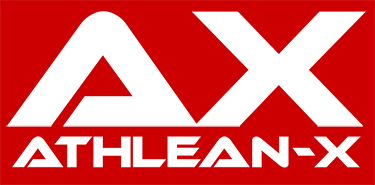
- Aerobic exercise means oxygen-based. Think long duration, steady effort, low to moderate intensity. Fuels endurance, recovery, and fat metabolism.
- Anaerobic exercise is oxygen-free. Short bursts, max effort, high intensity. Fuels strength, size, and explosive power using ATP and glycogen.
- When deciding how to use aerobic vs. anaerobic exercise, be sure to match it to your fitness goals:
- Strength: Focus on anaerobic lifting first then use zone 2 cardio on off days.
- Muscle Mass: Prioritize lifting volume and sprinkle in low-intensity cardio and the occasional Zone 3.5 circuit.
- Fat Loss: Combine resistance training, frequent Zone 2 sessions, and 1 HIIT or circuit finisher per week.
- Athletic Performance: Use all systems (strength, plyo, HIIT, and aerobic base) to train like you play.
AEROBIC VS ANAEROBIC FAQ
Think of it like this: aerobic training is steady and controlled. It runs in the presence of oxygen, powering movement over longer periods like zone 2 cardio, incline walks, or tempo bodyweight exercises circuits.
Anaerobic training, on the other hand, is a turbo boost. It kicks in when oxygen can’t keep up like during heavy lifting, sprinting, or HIIT. It relies on fast fuel (ATP and muscle glycogen) for short, explosive bursts of max effort.
Aerobic = longer, steady effort. Anaerobic = short, intense output. Both have their place, but which one you prioritize depends on your goal.
These are short-duration, high-intensity exercises where oxygen can’t keep up and that’s exactly what makes them effective.
Here’s a list that gets the job done:
Heavy Resistance Training: Think 3–6 reps of deadlifts, squats, presses. Heavy weight, short effort.
Sled Pushes: Load it up, drive hard for 10–20 seconds. Rest. Repeat.
Jump Squats: Explosive power. Max effort for low reps.
Sprint Intervals: 20-second sprints, 40-second rest.
Plyo Push-Ups or Med Ball Slams: Power-based upper body work that torches fast-twitch fibers.
Yes, but not during the workout the way you think.
In the anaerobic zone, you're working so hard that your body doesn’t have time to use fat for fuel. It taps into muscle glycogen and ATP instead. But the magic happens after the workout.
Thanks to EPOC (excess post-exercise oxygen consumption), your body keeps burning calories for hours as it restores oxygen, rebuilds ATP, and clears out metabolic byproducts. That afterburn effect is what torches fat long after you leave the gym.
So, while aerobic training burns fat during, anaerobic training burns it after. Use both strategically, and you’ll be leaner, stronger, and better conditioned across the board.
REFERENCES
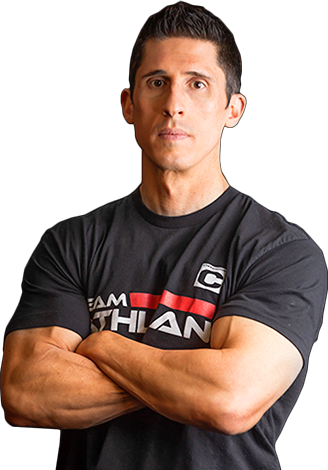
Jeff Cavaliere M.S.P.T, CSCS
Jeff Cavaliere is a Physical Therapist, Strength Coach and creator of the ATHLEAN-X Training Programs and ATHLEAN-Rx Supplements. He has a Masters in Physical Therapy (MSPT) and has worked as Head Physical Therapist for the New York Mets, as well as training many elite professional athletes in Major League Baseball, NFL, MMA and professional wrestling. His programs produce “next level” achievements in muscle size, strength and performance for professional athletes and anyone looking to build a muscular athletic physique.
